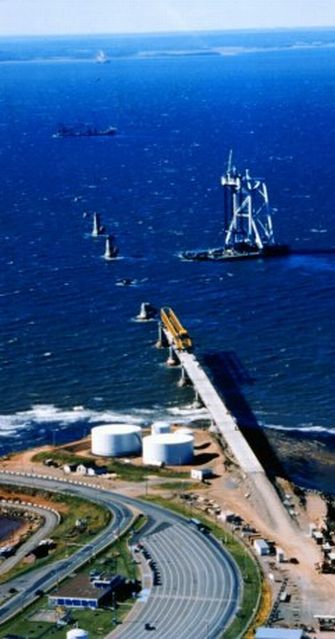|
Scour Monitoring |
|
|
Confederation Bridge - Scour Monitoring System Baird was responsible for the assessment of scour potential, design of scour protection and development of a scour monitoring program for the $840M, 13 km long Confederation Bridge between New Brunswick and Prince Edward Island in the Canadian Maritimes (East Coast). A new scour design methodology was developed to estimate scour potential in complex seabed materials (weak, fractured rock) exposed to complex hydrodynamic flow conditions (wave and tidal induced flows around conical piers). Uncertainties associated with the new scour design methodology, as well as highly variable seabed conditions, led to the implementation of a systematic scour monitoring program. The development of a near real-time wave and tide monitoring software system was an important component of the scour monitoring program. This system quantifies the magnitude of storm events (considering the combined occurrence of waves and tides) to which the bridge is exposed and relates these to seabed scour potential, thereby providing a systematic method to define the requirement for inspection of the seabed or scour protection around the base of each of the 65 bridge piers. This information, generated and archived since the Bridge opened in 1997, was recently utilized, along with seabed comparisons derived from detailed surveys undertaken in 1996-97 and 2002-03, to improve the scour design methodology and refine the scour monitoring program. |

|


